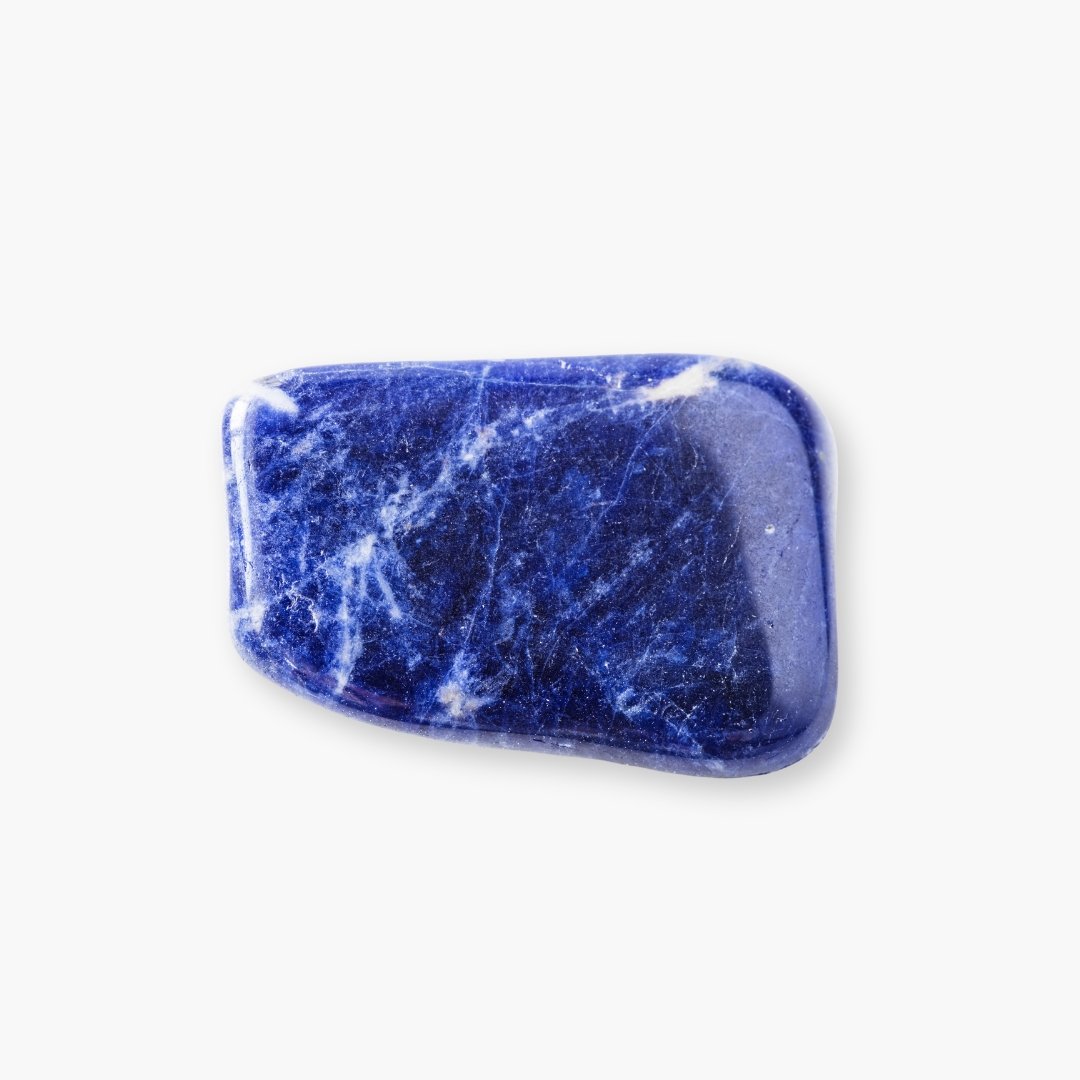Lapis Lazuli vs Sodalite
So you’ve got two blue beauties in front of you, and they’re looking eerily similar. One’s lapis lazuli, the other’s sodalite, but which is which? Don’t worry—once you’ve got the facts, telling them apart is easier than you think. Let’s dig into the science and subtle details that make these two stones unique.
Chemical Composition: The Core of Their Character
Here’s where the differences really begin. Lapis lazuli isn’t a single mineral—it’s a rock made up of several minerals, primarily lazurite (which gives it its blue hue), with inclusions of pyrite (gold flecks) and calcite (white streaks).
On the other hand, sodalite is a single mineral—a feldspathoid composed mostly of sodium, aluminium, and chlorine. It’s chemically simpler, which is why its appearance tends to be more uniform.
Lapis Lazuli
Sodalite
Colour and Inclusions: What to Look For
While both stones are blue, their hues and inclusions tell different stories:
Lapis lazuli is a deep, rich blue with golden pyrite flecks and often white calcite streaks. The golden sparkle is its calling card—if you see that, you’re looking at lapis.
Sodalite, by contrast, leans into lighter blues with a more consistent white veining from calcite. It’s got no gold flecks, so if the stone in your hand looks like a night sky sprinkled with stars, it’s probably not sodalite.
Patterns and Clarity: Starry vs. Smooth
Both stones are opaque, but their patterns are a clue to their identity. Lapis lazuli often has a more granular or "speckled" look because of its mixed composition. Sodalite, being a single mineral, usually has smoother, more uniform veining. Think of lapis as bold and dynamic, while sodalite is softer and more understated.
Close up: Lapis Lazuli
Close up: Sodalite
Hardness: A Test of Durability
On the Mohs scale of hardness, lapis lazuli ranges between 3 and 6.5, depending on its mineral mix. This makes it relatively soft and prone to scratches—handle with care. Sodalite, scoring between 5.5 and 6, is slightly harder and more durable but still requires gentle treatment. Neither stone is suitable for rough wear, so save them for special occasions or display.
Care and Cleaning: Treat Them Right
Both stones appreciate a little extra love. Here’s how to keep them looking their best:
Use warm water, mild soap, and a soft cloth—avoid harsh chemicals.
Lapis lazuli may be dyed, so test for treatments before submerging it in water.
Keep both away from acids, bleach, or high heat.
To recharge their energy, place them under moonlight or near cleansing stones like selenite or satin spar.
Rough lapis lazuli
Rough sodalite
Origins: Where in the World?
The history and origins of these stones add to their allure:
Lapis lazuli has been cherished for millennia, from ancient Egypt to Mesopotamia. Today, it’s primarily sourced from Afghanistan, Chile, and Myanmar.
Sodalite was first discovered in Greenland and is now mined in places like Canada, Namibia, and South America.
Knowing their origins can also help you identify them, as the sourcing impacts their specific appearance.
Why We Love Them: Uses and Benefits
Both stones are prized for their aesthetic and energetic qualities:
Lapis lazuli is associated with wisdom, self-awareness, and spiritual growth. It’s also thought to help reduce stress and boost the immune system.
Sodalite is a stone of peace and clarity, great for improving communication and balancing emotions. It’s even said to help ease panic attacks and mood swings.
Both stones align with the third eye and throat chakras, making them ideal for meditation, enhancing intuition, and speaking your truth.
Lapis lazuli tumbled stone
Sodalite tumbled stone
The Quick ID Guide
When in doubt, here’s your cheat sheet:
Golden pyrite flecks? Lapis lazuli.
White veining without gold? Sodalite.
A richer, vibrant blue? Lapis.
A mid to dark blue? Sodalite.
Understanding these differences doesn’t just help you pick the right stone—it gives you a deeper appreciation for what makes each unique. Armed with this knowledge, you’re ready to shop (or identify) with confidence!







